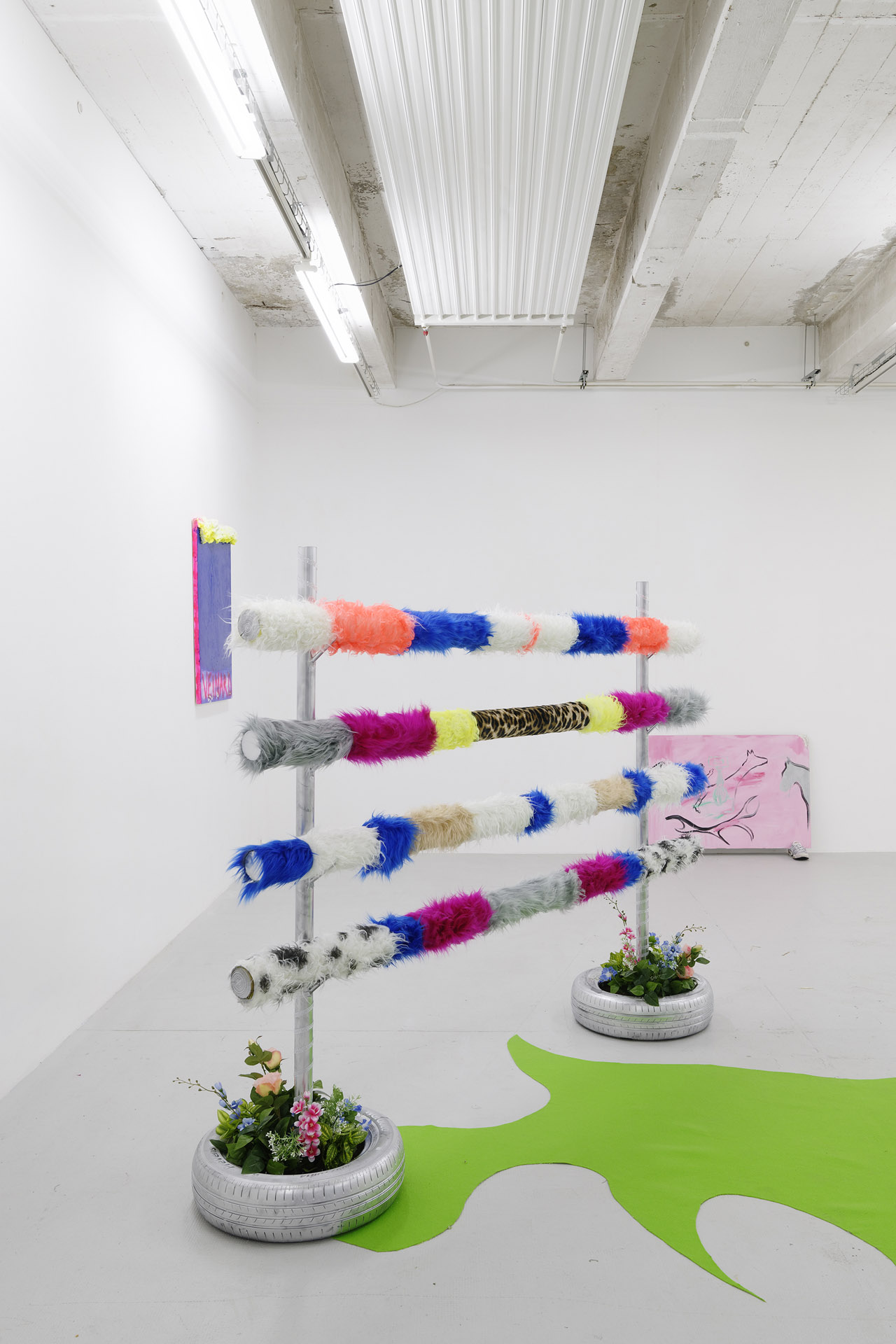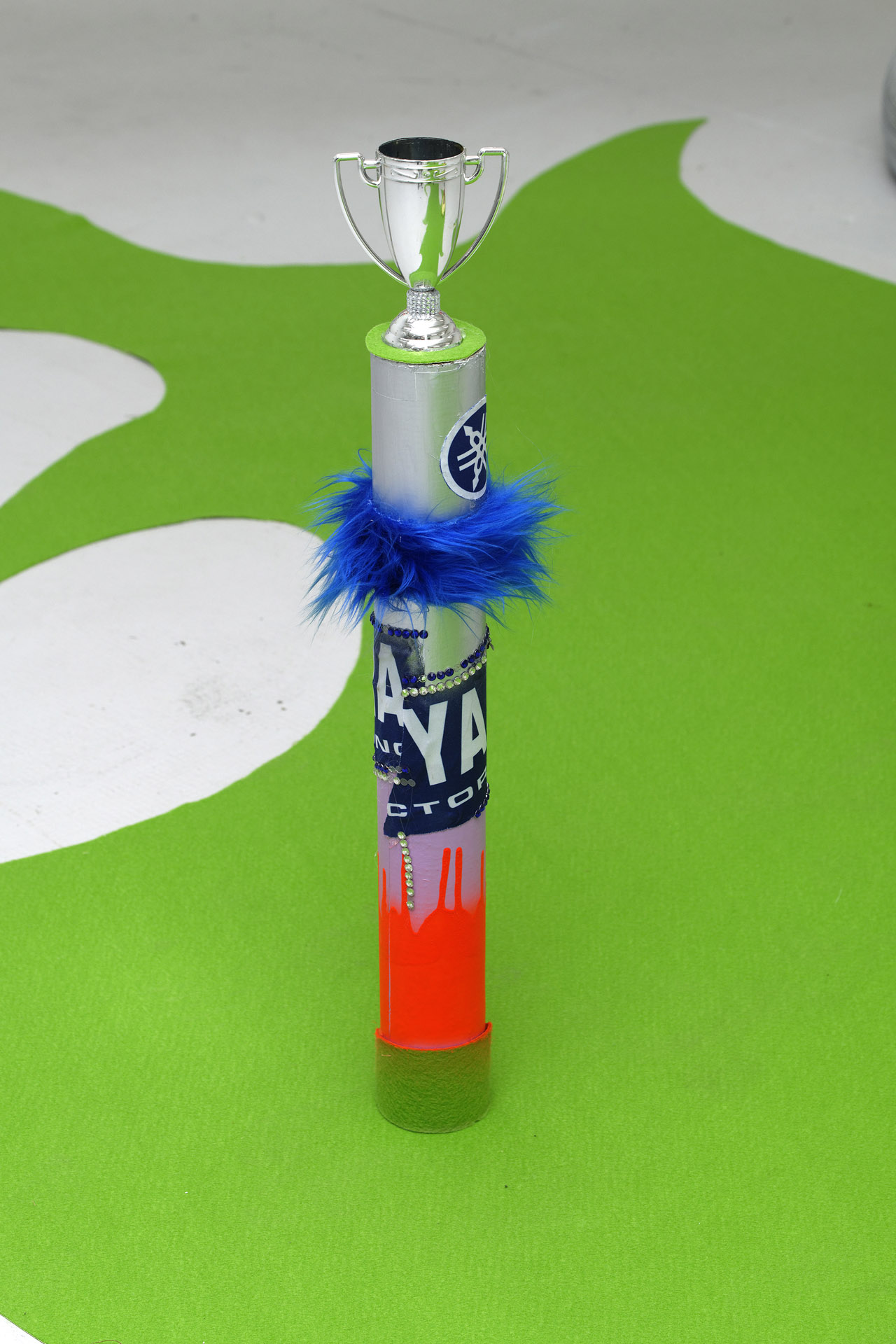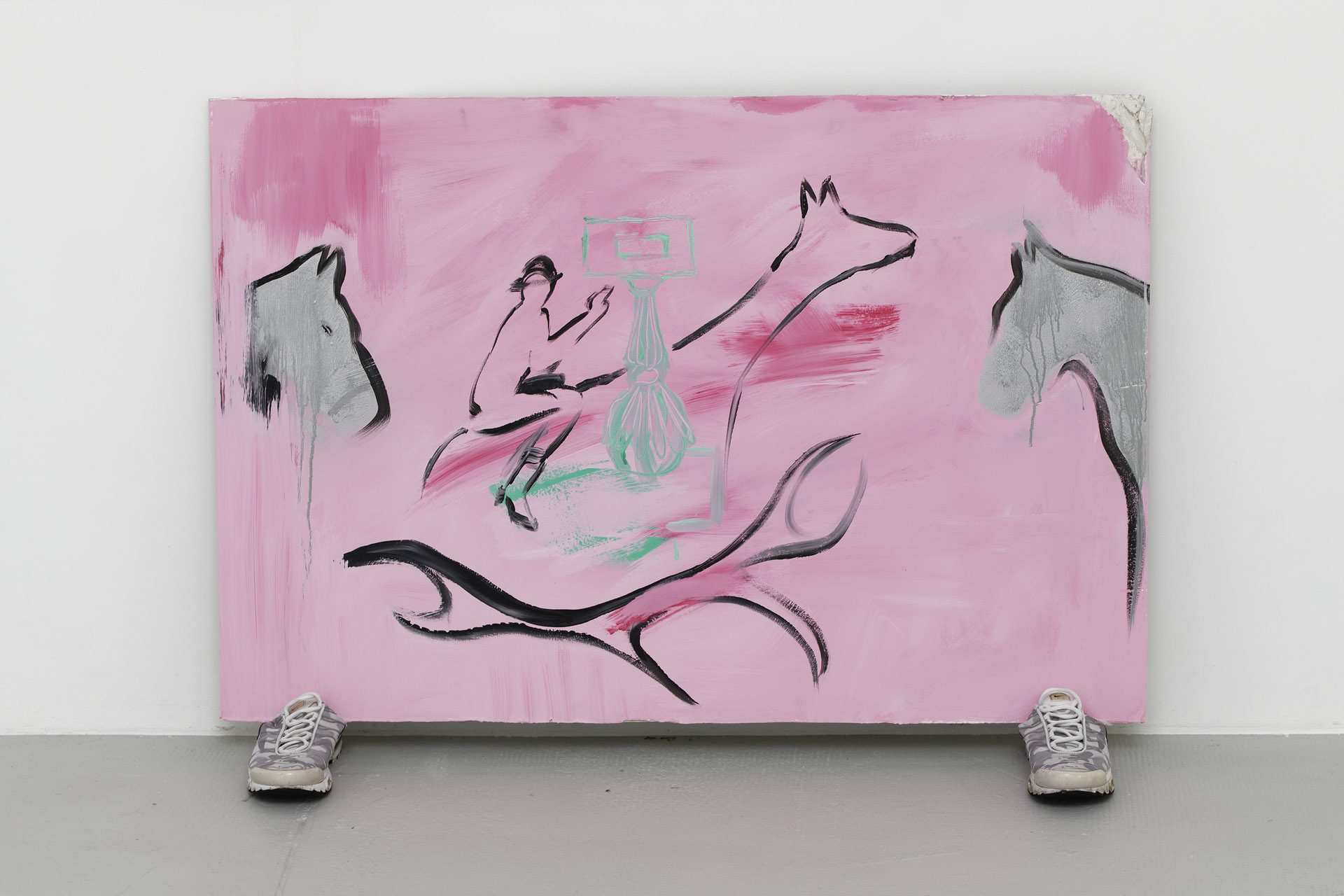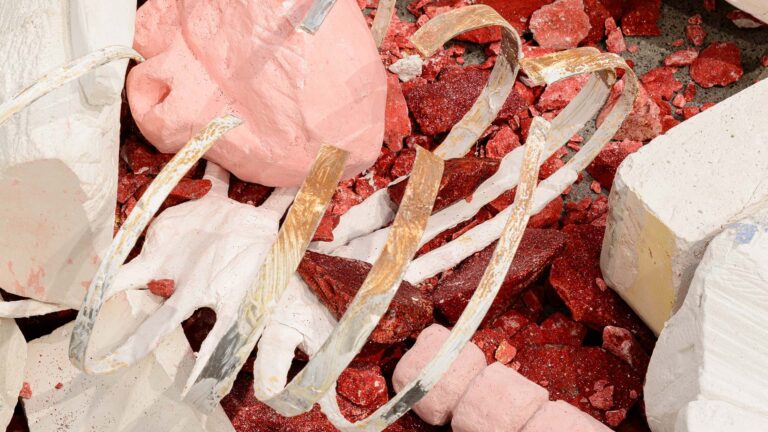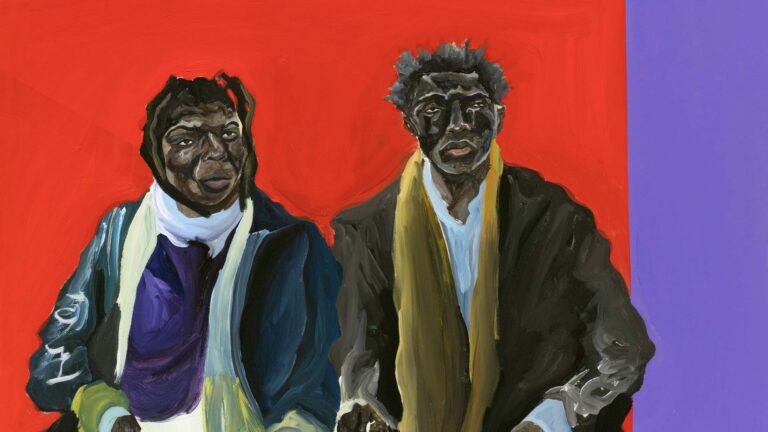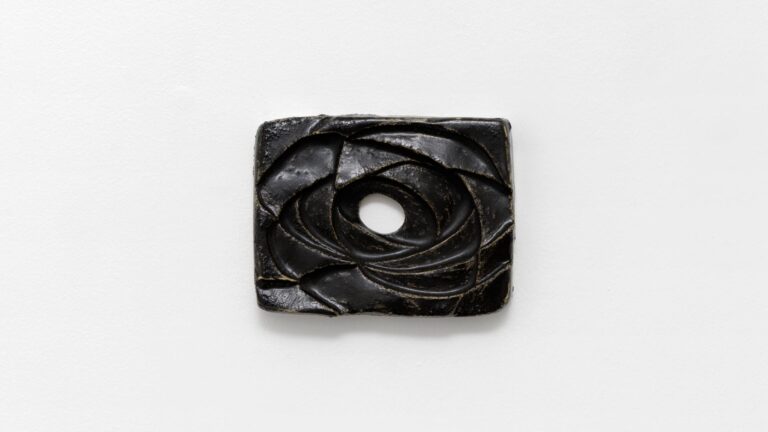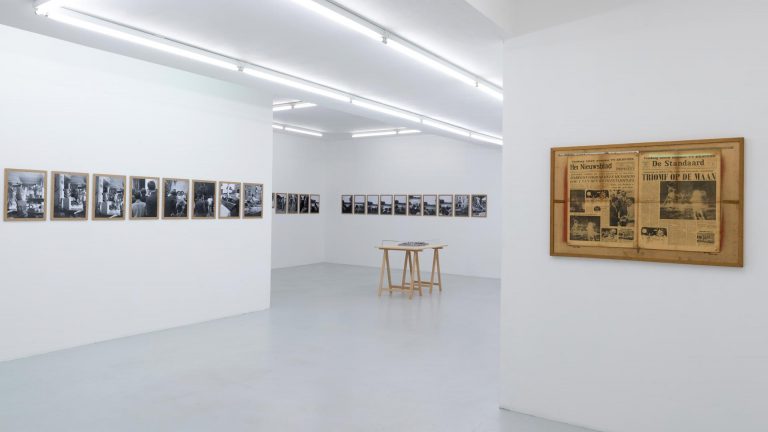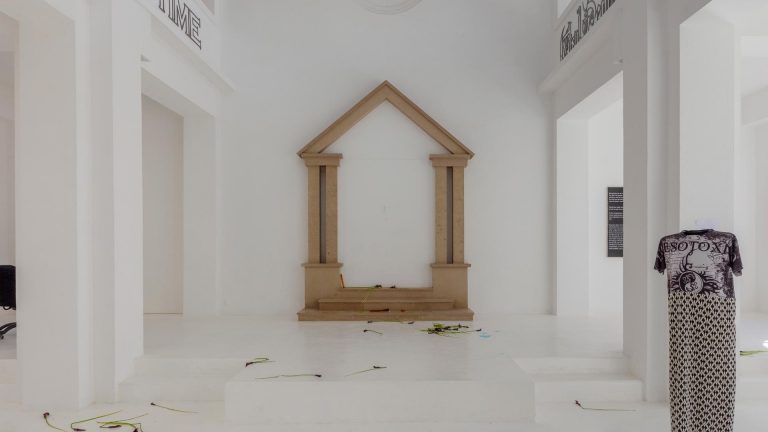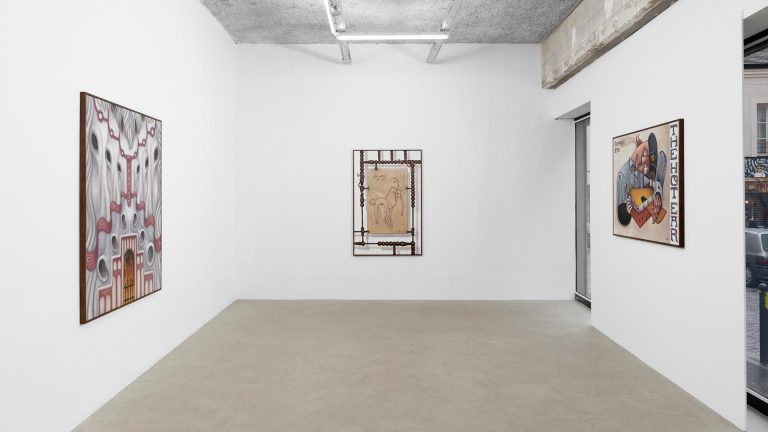Artist: Johanna Cartier
Exhibition title: Turfur
Venue: Passerelle Centre d’art contemporain, Brest, France
Date: June 11 – September 11, 2021
Photography: all images copyright and courtesy of the artist and Passerelle Centre d’art contemporain
Each year since 2013, the Passerelle Centre d’art contemporain and Documents d’Artistes Bretagne have selected two artists from Brittany for a residency. The laureates are invited to reside in Brest, to work in the art center studio for a period of 3 months and to produce an original exhibition. Following her residency, Johanna Cartier (born in 1996) is presenting Turfur on the upper floor of Passerelle. A graduate of the École européenne supérieure d’art de Bretagne (European Academy of Art in Brittany), Rennes campus, in 2019, for several years Johanna Cartier has developed works imbued with adolescent codes, resounding with popular music or scrutinizing rural areas with empathy and her own experience.
After a passion for dog shows, another type of animal competition has now captivated Johanna Cartier: that of equestrian world. Bringing together films, sculptures and paintings, the Turfur exhibition results from an observation of this very specific universe, navigating between sport and gambling. This masculine world revolves around the betting shop, the local bar and lottery ticket counters. The design of these places is dated or kitsch, the atmosphere is that of a France that is invisible and has been made invisible, lulled by the sound of non-stop tv news broadcasts.
The title Turfur is a portmanteau word that can be read at several levels. Firstly, the English word ‘turf’ refers to the land used for horse-racing and by extension riding and activities related to racing. This title also evokes the French ‘verlan’ or reverse slang for ‘future’, widely used in urban language, especially in rap. By the way, “turf” can also mean an area, a group or a person considers their own, their home territory. The ‘fur’– always synthetic in her work – is an element that the artist likes to use, it plays a leading role in the exhibition. Finally, Turfur is a mantra, an exclamation emanating from a world still hidden and unknown.
Through two films, this exhibition also provides an opportunity to reverse roles, situations and assumptions. Here the horse-rider is rowdy and excited, whereas the fan of urban motorcycle rodeos proves to be tender and attentive to his mechanical mount. Both share their position as heroic yet disturbing figures. They combine the interests, a priori, of the ‘bourgeois’ – the glorification of the equestrian arts – with those of the “boys from the hood” – the fascination for a powerful ride.
Turfur observes the fringe of society that you pass by every day, that of the crossroad by your workplace or near the bakery. You understand it quickly : behind the flashy coloured shapes, the slogans and devastating punchlines and the silky, cheap materials used by Johanna Cartier as the base for her vocabulary, an underlying class struggle with no right or wrong is being waged.




